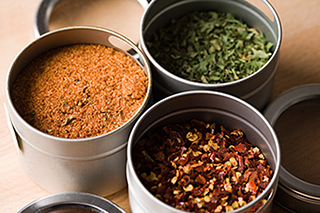Gardening is a delightful hobby that offers numerous benefits, from enhancing your living space to improving mental well-being.
One fascinating aspect of gardening is propagating plants from cuttings in water. It’s a simple and rewarding technique that allows you to multiply your favorite plants with ease.
Whether you’re a seasoned gardener or a novice enthusiast, growing plants from cuttings in water is a gratifying experience.
Here, we present a list of the top 10 plants that thrive when propagated in water, along with tips on how to do it effectively.
Also read: Three Mediterranean Breakfast Ideas To Beat The Morning Blues For Busy People
1. Pothos (Epipremnum aureum)

Pothos, also known as Devil’s Ivy, is a popular choice for indoor gardening enthusiasts due to its low maintenance and air-purifying properties.
Propagating pothos in water is incredibly easy. Simply snip a stem with several leaves attached and place it in a jar of water.
Ensure that at least one node (the point where leaves emerge) is submerged. Within a few weeks, you’ll notice roots starting to develop, and soon after, you’ll have a thriving new pothos plant ready for potting.
2. Spider Plant (Chlorophytum comosum)

Spider plants are beloved for their elegant, arching foliage and air-purifying qualities.
Propagating spider plants in water is a breeze, making them an excellent choice for beginners. Snip off a healthy, mature spider plant pup (offshoot) with some roots attached and place it in a jar of water.
Ensure the roots are submerged while the leaves remain above water. With regular water changes to prevent stagnation, your spider plant cuttings will quickly develop robust roots, ready to be transferred to soil.
3. Mint (Mentha spp.)

Mint is a versatile herb that adds a refreshing flavor to culinary dishes and beverages.
Propagating mint in water is a convenient way to ensure a steady supply of this aromatic herb. Take cuttings from mature mint plants, ensuring each cutting has several nodes.
Place the cuttings in a glass of water, making sure the nodes are submerged. Mint roots readily and will produce new growth within a few weeks. Change the water every few days to prevent mold and bacterial growth.
4. Basil (Ocimum basilicum)

Basil is a staple herb in many kitchens, prized for its distinctive flavor and fragrance. Propagating basil in water is a simple method to grow this herb indoors, especially during colder months.
Snip off a healthy basil stem just below a leaf node and place it in a container of water. Ensure that only the stem is submerged, with no leaves touching the water, to prevent rot.
Within a week or two, roots will emerge from the nodes, and you’ll have fresh basil ready for culinary use.
5. Coleus (Plectranthus scutellarioides)

Coleus plants are prized for their vibrant foliage, which comes in a variety of colors and patterns. Propagating coleus in water is an effective way to preserve their genetic traits and expand your collection.
Take stem cuttings from mature coleus plants, ensuring each cutting has at least two pairs of leaves. Place the cuttings in a jar of water, ensuring the nodes are submerged. Keep the jar in a bright, indirect light location and change the water regularly.
In a few weeks, roots will develop, and you can transplant the cuttings into pots.
6. Rosemary (Rosmarinus officinalis)

Rosemary is a fragrant herb commonly used in cooking and aromatherapy. Propagating rosemary in water is a viable option, especially if you want to ensure a fresh supply of this herb year-round.
Take cuttings from mature rosemary plants, preferably from non-flowering stems. Remove the lower leaves and place the cuttings in a glass of water, ensuring the submerged nodes. Place the glass in a sunny location and change the water every few days.
Soon, you’ll see roots forming, and you can transplant the cuttings into pots or the garden.
7. Sage (Salvia officinalis)

Sage is an aromatic herb prized for its culinary and medicinal properties. Propagating sage in water is a straightforward process that yields excellent results.
Take stem cuttings from healthy sage plants, ensuring each cutting is at least four inches long and has several sets of leaves. Place the cuttings in a jar of water, making sure the nodes are submerged.
Place the jar in a sunny location, changing the water every few days to prevent stagnation. Within a few weeks, roots will develop, and you can transplant the cuttings into pots or the garden.
8. Philodendron (Philodendron spp.)

Philodendrons are popular houseplants known for their attractive foliage and air-purifying qualities.
Propagating philodendrons in water is a reliable method to expand your indoor garden collection. Snip off a healthy philodendron stem with several nodes and place it in a jar of water. Ensure that at least one node is submerged while the leaves remain above water.
Keep the jar in a bright, indirect light location and change the water regularly. In a few weeks, roots will emerge, and you can pot the cutting in soil.
9. African Violet (Saintpaulia spp.)

African violets are cherished for their delicate, colorful blooms and compact size, making them perfect for indoor cultivation. Propagating African violets in water is an effective way to create new plants from existing ones.
Take leaf cuttings from healthy African violet plants, ensuring each cutting has a stem attached. Place the cuttings in a container of water, ensuring that the stems are submerged while the leaves remain dry.
Keep the container in a warm, bright location away from direct sunlight. In a few weeks, tiny plantlets will emerge from the leaf stems, ready to be potted.
10. English Ivy (Hedera helix)

English ivy is a versatile plant appreciated for its trailing habit and ability to thrive in various conditions.
Propagating English ivy in water is a simple and rewarding process. Snip off a healthy ivy stem with several leaves and place it in a jar of water. Ensure that the nodes are submerged while the leaves remain above water.
Place the jar in a bright, indirect light location and change the water regularly. Roots will develop within a few weeks, and you can transplant the cutting into soil or a hanging basket.
Conclusion
Growing plants from cuttings in water is a fulfilling endeavor that offers numerous benefits, from expanding your plant collection to saving money on new purchases. Whether you’re a seasoned gardener or a beginner, propagating plants in water is a simple and effective method that yields excellent results.
Experiment with different plant varieties and enjoy the satisfaction of watching new roots emerge and grow. With the top 10 plants listed above, you can create a lush and vibrant indoor garden with ease. So, roll up your sleeves, grab your pruners, and start propagating your favorite plants today!




